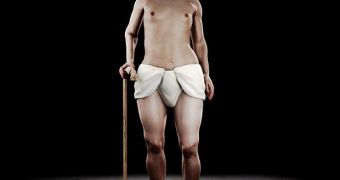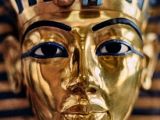Just a few days from now, on Sunday, BBC One is scheduled to air a documentary dubbed “Tutankhamun: The Truth Uncovered.” By the looks of it, this documentary is one ancient Egypt enthusiasts will definitely not want to miss.
Thus, “Tutankhamun: The Truth Uncovered” argues that ancient Egypt's King Tutankhamun was a child of incest and therefore displayed several deformities that made it nearly impossible for him to get around without help.
Besides, it is said that, contrary to previous assumptions, it is likely that this pharaoh died at the age of just 19 not because he was murdered or because he was involved in some horrific accident, but because of his poor health.
King Tutankhamun's parents
Having put together a detailed genetic profile of King Tutankhamun, researcher Albert Zink with Italy's Institute for Mummies and the Iceman found that the young pharaoh's father was an ancient Egypt ruler named Akhenaten and that his mother was Akhenaten's sister.
Albert Zink and colleagues say that, in ancient Egypt, people didn't have anything against incest. On the contrary, it was believed that having a brother and a sister birth kids together helped keep a family's blood line pure. Nobody ever assumed that children of incest were sure to have serious health trouble.
Interestingly enough, specialist Hutan Ashrafian with the Imperial College London argues that, according to evidence at hand, several other members of King Tutankhamun's family were born to parents who were more or less closely related to one another.
Hence, they all suffered from various conditions that the researcher believes were caused by hormonal imbalances and passed away while still fairly young. “A lot of his family predecessors lived to a ripe old age. Only his immediate line were dying early, and they were dying earlier each generation,” explains Hutan Ashrafian, as cited by Daily Mail.
The young pharaoh's deformities
After compiling and analyzing data provided by over 2,000 computerized scans of King Tutankhamun's remains, specialists found that the long lost pharaoh had a club foot, feminine hips, and buck teeth. These deformities are believed to have been the result of the fact that his parents were related.
What's more, Egyptian radiologist Ashraf Selim says that, sometime during his adolescence, the young pharaoh developed a bone disease that caused him to experience severe pain. Together with his deformities, this disease left him with no choice but rely on walking sticks to get around.
“The virtual autopsy shows the toes are divergent – in layman's terms it's club foot. He also developed Kohler's disease or death of the bones, during adolescence, which would have been incredibly painful,” the specialist details.
“We know that this man had 130 walking sticks and that he used to shoot arrows while he was sitting,” adds Zahi Hawass, the current secretary general of Egypt's Supreme Council of Antiquities, as cited by International Business Times.
In light of these findings, specialists argue that it is very much possible that King Tutankhamun passed away at an incredibly young age, i.e. he was just 19 when he died, not because he was killed or because he was involved in some sort of accident, but simply because his poor health eventually proved too much for him to handle.

 14 DAY TRIAL //
14 DAY TRIAL // 

